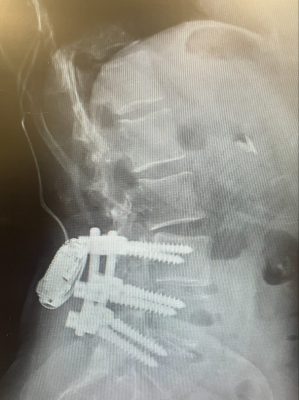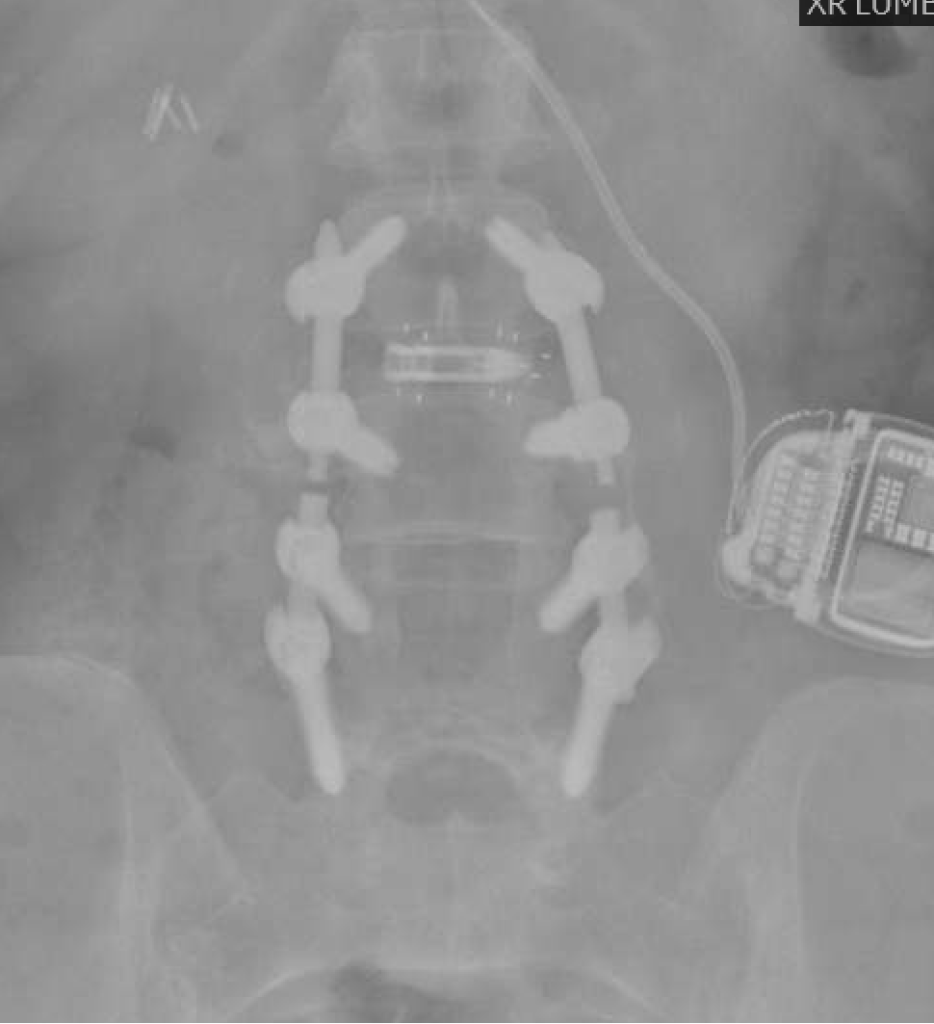Case Studies



Case Study: Clinical Application of FlareHawk7 in a Minimally Invasive Lumbar Fusion
Performed by Steven M. DeLuca, D.O., M.S.
Orthopedic Institute of Pennsylvania
Clinical History
A 59-year-old female with a BMI of 26 presented with complaints of right thigh pain radiating from the hip to the knee. The patient had previously undergone two open lumbar decompression surgeries with posterior spinal instrumentation (PSI). The first procedure was performed at the L4-5 level in February 2008, followed by a second surgery at the L3-4 level in February 2010. Despite these interventions, the patient experienced minimal relief. As an alternative, a dorsal column pain stimulator was implanted in July 2021, but it provided only slight improvement.
Subsequent diagnostic assessments revealed degenerative disc disease (DDD) at the adjacent segment with a Grade 1 dynamic retrolisthesis at the L2-3 level. This condition caused central and foraminal stenosis at L2-3, leading to left lumbar radiculopathy, which was diagnosed in December 2022.
The patient reported a pre-operative VAS score of 9 out of 10.


Products Used
FlareHawk7 Cage
LineSider Spinal System


Procedure
Dr. Deluca opted to use Accelus’s FlareHawk7 Interbody Fusion System to address the patient’s lumbar condition. The device was introduced through a percutaneous right-sided Kambin’s approach. The FlareHawk7 implant chosen for this case had a height of 14mm, 0 degrees of lordosis, and a length of 30mm.
Accelus’s LineSider® Spinal System was used for posterior fixation in this case. The surgeon chose the system’s MIS platform, inserting pedicle screws and rods at the L2 and L3 levels after cutting the rod and removing the previous hardware at L3.
The FlareHawk7 Interbody Fusion System was chosen for this patient due to her condition, which included mild central stenosis and significant foraminal stenosis caused by disc space narrowing and dynamic instability. These factors made her an excellent candidate for minimally invasive indirect decompression. Dr. Deluca’s preference for a Kambin’s approach over direct lateral or oblique lumbar interbody fusion (OLIF) techniques was based on his belief that it is the least invasive of these approaches.
Outcomes
After undergoing the surgical procedure, the patient noted a significant reduction in pain, as evidenced by a marked decrease in VAS scores. The patient remained in the hospital overnight for post-operative surveillance and was discharged home the following day.
Dr. Deluca was pleased with the performance of the FlareHawk7 Interbody Fusion System. The height restoration achieved by the device and the central positioning of the cage on both anterior-posterior (AP) and lateral views was particularly notable. Dr. Deluca also stated that the outcome closely resembled the results that might have been achieved through an OLIF or direct lateral approach. Based on this case, he found the FlareHawk7 Interbody Fusion System to be highly effective in addressing specific diagnoses, such as mild central stenosis and significant foraminal stenosis, using minimally invasive techniques. The device’s design and features allowed for successful indirect decompression, height restoration, and precise cage placement, ultimately leading to a positive outcome for the patient.
FLAREHAWK video case studies


Spondylolisthesis in Former U.S. Marine Parajumper
Rohit Vasan, M.D.





